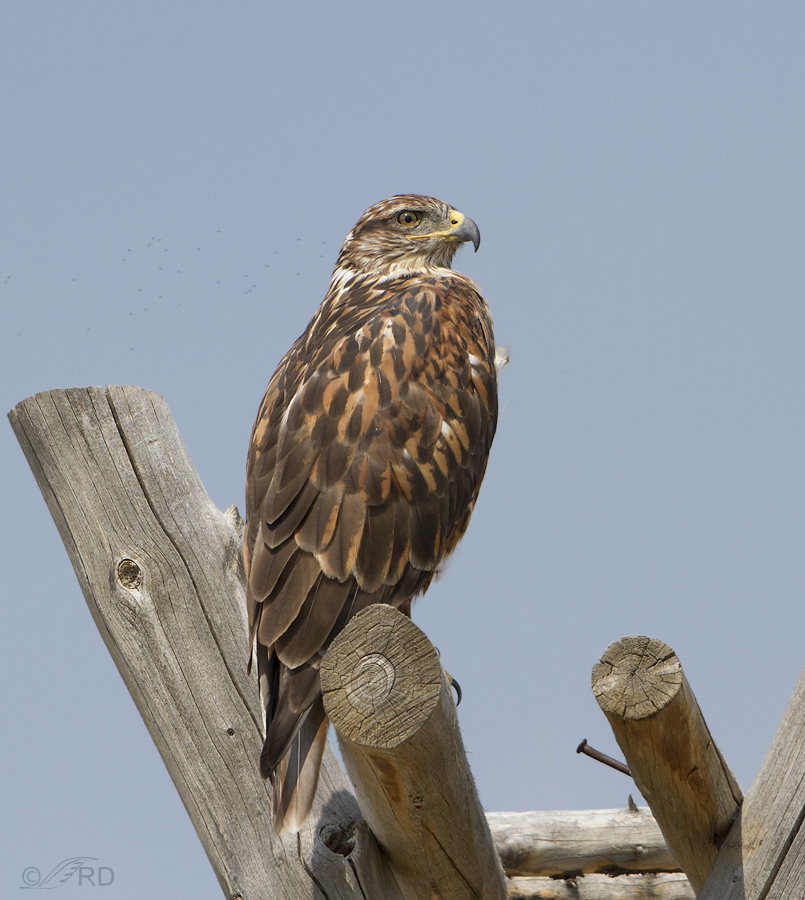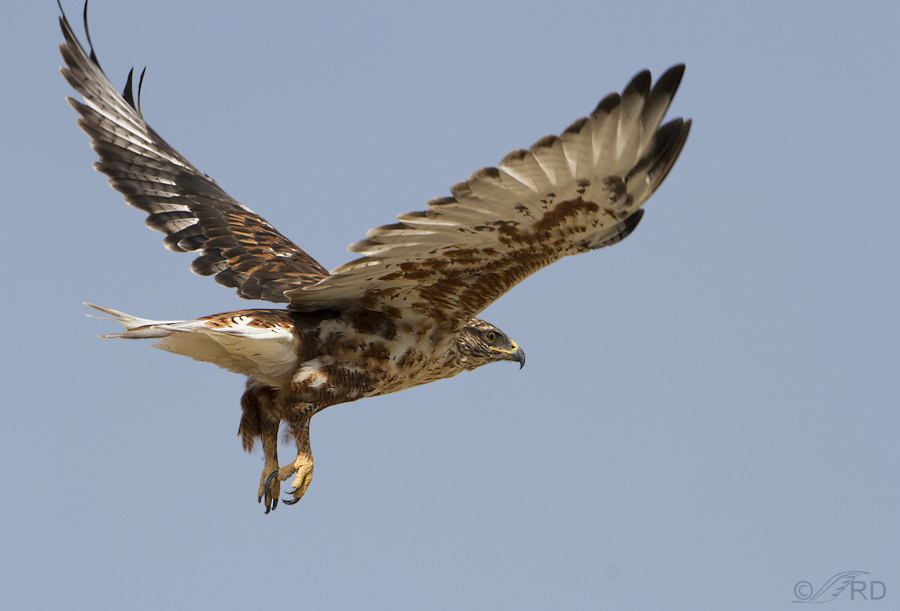Ferruginous Hawks are very impressive birds when you get this close to them. They are massive broad-winged hawks with a wide gape, large head and burly chest. They are our largest buteo and share many characteristics with the Golden Eagle.
Last week in Montana I came across this bird on what is apparently a favorite perch – a rustic entrance gate to an irrigated farm in a small, beautiful and lush valley in Beaverhead County. I say “favorite perch” because I found this same bird (apparently) on the same gate, and in the same position, last month.

1/2500, f/7.1, ISO 500, 500 f/4
These hawks are “sit and wait” hunters, which is exactly what this bird was doing. Their preferred prey is ground squirrels and prairie dogs and based on the number of badger holes in the valley I’d guess that there’s plenty of ground squirrels available.

This is another version of the same image, cropped differently and more closely to better show the group of gnats (no-see-ums) swarming around the head of the hawk (to the left, I cloned them out in the first image).
In some ways the biologist in me actually prefers the second version.

1/2000, f/8, ISO 500, 500 f/4
When it took off it was facing away and I clipped a wing-tip but I decided to include this image anyway to show the bird up close and in flight.
Ron


Yes, I prefer the one with the insects too. Beautiful bird, great photos.
Dave
Thanks Dave. At least two of us agree on that!
Wonderful feather pattern and colors to these beautiful hawks, excellent shots Ron.
Thank you Jim.
What an incredible and powerful looking bird. Thank you. I was also very glad to get an explanation for ‘no-see-ums’, I have come across the term in books before but had to guess what they were. (And guessed correctly).
No-see-ums are a scourge Elephants Child. When they’re out and about they drive both Mia and I crazy(er). They’re so tiny you normally don’t notice them until a while later when you start to itch and scratch from lots of bites. They’re much worse than mosquitoes and insect repellant has little effect on them. Nasty little buggers…
Ditto, what a majestic creature… Fascinating about the naming. The details on his feathers is astounding!
I liked the detail in that second photo too Christina. Thanks.
Nice! These images motivate me to research their molt and plumage sequence. The upper body looks adult-like, but the head isn’t as grey as our wintering adult (Oregon) birds, and the belly/breast isn’t as white as the birds i see. I’ll check it out. Always something to learn for raptor-philes… Wonderful images, Ron!
Thanks Dick. I’m no raptor plumage/molt expert and hadn’t noticed what you mention – might have to do a little research on it myself.
Whoa! No further need to wonder why their scientific name is Buteo Regalis. That second picture explains it all.
I’ve always thought that was a great scientific name for the species too Mike.